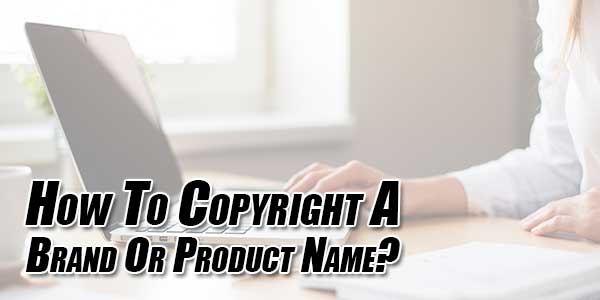
When you’re working hard to build your brand online, you need to have the peace of mind that your efforts won’t suddenly turn out to be in vain. Whilst it’s unlikely that your readers will all decide to stop reading and subscribing en masse, it’s perfectly possible that you could fall foul of the complicated world of copyrights without even realizing it. To ensure it doesn’t happen to you, we’ve put together a handy 5-minute read that will tell you everything you need to know.
Table of Contents
What Is Copyright?
Copyright is a legal tool that allows you to register a piece of intellectual property as your own. It’s what stops other brands from being able to call themselves Gucci or Versace, and it’s what allows the brands themselves to remain unique.
Without copyrights the world would be full of imitation, and whilst it’s the biggest form of flattery, it’s no use if no one can tell who the originator is.
Why Would You Need To Copyright Your Blog?
Copyrighting a blog might seem a little draconian or over the top, especially when you consider that anyone can start posting at any time. Aren’t you just limiting the creative freedom of everyone else by determining what they can and can’t write about? Well, not really, and here’s why.
You don’t copyright topics and writing ideas, and you certainly don’t copy content — that’s what plagiarism guidelines are for. But what you do copyright is the title or name of your blog. It’s the very essence of your brand, and that’s precisely why you need to protect it. You wouldn’t think twice about protecting the name of your fashion label, so why should your blog be any different?
Running a blog isn’t just about the quality of the written words you produce, it’s also about the brand you’re building that sits behind it. If you don’t copyright your name then you’re leaving it open for all comers, and that’s never going to end well.
What Happens If You Infringe Someone Else’s Copyright?
Copyright law can get very complex before you know it, which is why it always pays to ask the advice of someone who definitely knows what they’re doing. If you want to ensure you don’t fall foul of someone else’s copyright, this is certainly the best approach to take.
You only have to take a look at how copyright infringement is becoming something of a hot topic in the online world to see that this would be money well spent. The precise nature of the penalty you could face will depend on the nature of the infringement, but it can include a fine and the removal of the offending content.
The Key Steps To Securing Your Copyright:
Now you’ve heard why when you want to start a fashion blog there’s plenty of things you’re going to need to know about in addition to the world of fashion, let’s take a look at how you’d secure copyright.

Check That You Actually Need One:
If you’ve only just started posting, then you’re probably not going to need copyright until you start getting substantial traffic. That said, if you want to build your brand on a solid foundation, why not secure your name sooner rather than later?
Decide Whether To Hire An Attorney:
You can really spend as much, or as little, as you like on attorney fees, but the end result is often largely the same. Of course, if you really don’t know what you’re doing then the attorney’s work will always be far superior, but otherwise, it’s the law of diminishing returns.
The best advice I can give you is to figure out what you’re willing to pay before you go any further. If you have a budget in mind you’ll be able to approach the task of finding an attorney with much more focus and direction than you otherwise would.
Find Out What Your Mark Format Is:
This is where things start to get a little more complicated, and you’ll start to meet the legalese you need to know about. Your mark format outlines the way in which you’re filing your trademark, and it comes in three different formats:
- Standard characters: including your blog’s name
- Stylized design: this principally covers logos and other associated graphics
- Sounds: this covers songs, jingles, and other audio content
You’ll be looking to file a standard character’s copyright application to cover your title, and potentially an additional stylized design application if you wish to protect your logo. It’s really important to note that just because your title may be listed as part of the logo, stylized design copyright does not by itself protect your blog title. Just a little tip I want to make sure you know.
When you create a brand, there’s nothing more important than ensuring no one else can copy or reproduce what you do. I’ve met so many aspiring fashion bloggers who’ve lost their followers and place in the spotlight overnight because they’ve inadvertently been using a name that infringes on someone else’s trademark.
Identify The Correct Trademark Classes:
At this point, your attorney will be up to full speed if you’ve hired one, but it’s still useful to understand the process. When you register a trademark you need to be explicit about the trademark classes you wish it to cover.
This is so that it’s clear that your copyright applies to a blog within the fashion industry, and if applicable, a particular niche area of fashion. The more specific your copyright is, the better protection it will give your blog in the years ahead.
Carry Out A Trademark Search:
This is where things start to get detailed, and it’s important you pay attention if your blog title is still undecided. By searching the USPTO database you can search for similar copyrights in the world of fashion blogging that have already been granted. This is a great way of double-checking how unique and memorable your blog name will be in the market. It will also allow you to make a last-minute change so that you don’t waste money on an application that’s sure to be rejected out of hand.
Determine Why You’re Failing:
This may sound odd given that we’ve spent the first portion of the article telling you why you need to file. The world of copyrighting can be confusing, but really it’s about being as specific and precise as possible.
If you’re a fashion blogger, then you’re virtually certain to be filing a ‘current usage’ application. This means you’re writing a blog with the same title at the time of the application, and the content has already gone live. This is in contrast to an ‘intent of use’ application which covers titles you don’t currently write under but intends to in the future.
The Final Step: Filing Your Copyright Application:
It may have felt like the day that would never come, but now it’s finally time to file your application and take a giant step forward. Everything can be done through your attorney, or via the USPTO website if you’ve decided to handle things yourself. It’s important to bear in mind that applications can take from anywhere to 4-6 months to reach initial processing, and delays are commonplace.
You can be sure you will then have to supply some clarifications, so make sure you respond in a timely fashion to speed things along. If all goes well, you should have your copyright granted in approximately 13-18 months.
Final Thoughts:
Creating unique blog content is what will set you apart from the rest in the online world, but you still need to ensure you tick all the other boxes involved with building a brand. If you think of your blog as a brand and a business, it will become one, and if you don’t, it won’t. It’s as simple as that when you want to make a success of yourself, and securing copyright that protects your name is just one step on the way to where you want to get to.
Take it seriously, get it done right, and seek out the advice of someone who really knows what they’re doing. It’s what will make all the difference to your long-term success in the industry.

 About the Author:
About the Author:
















Be the first to write a comment.